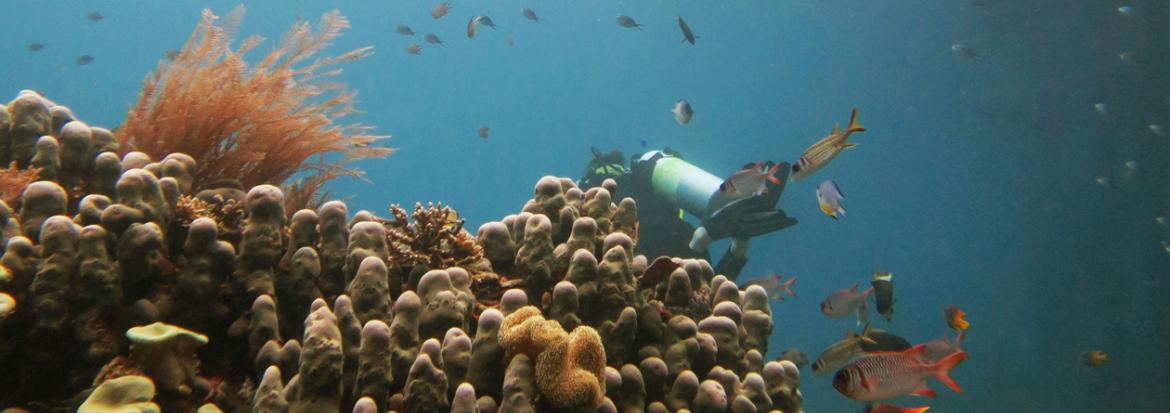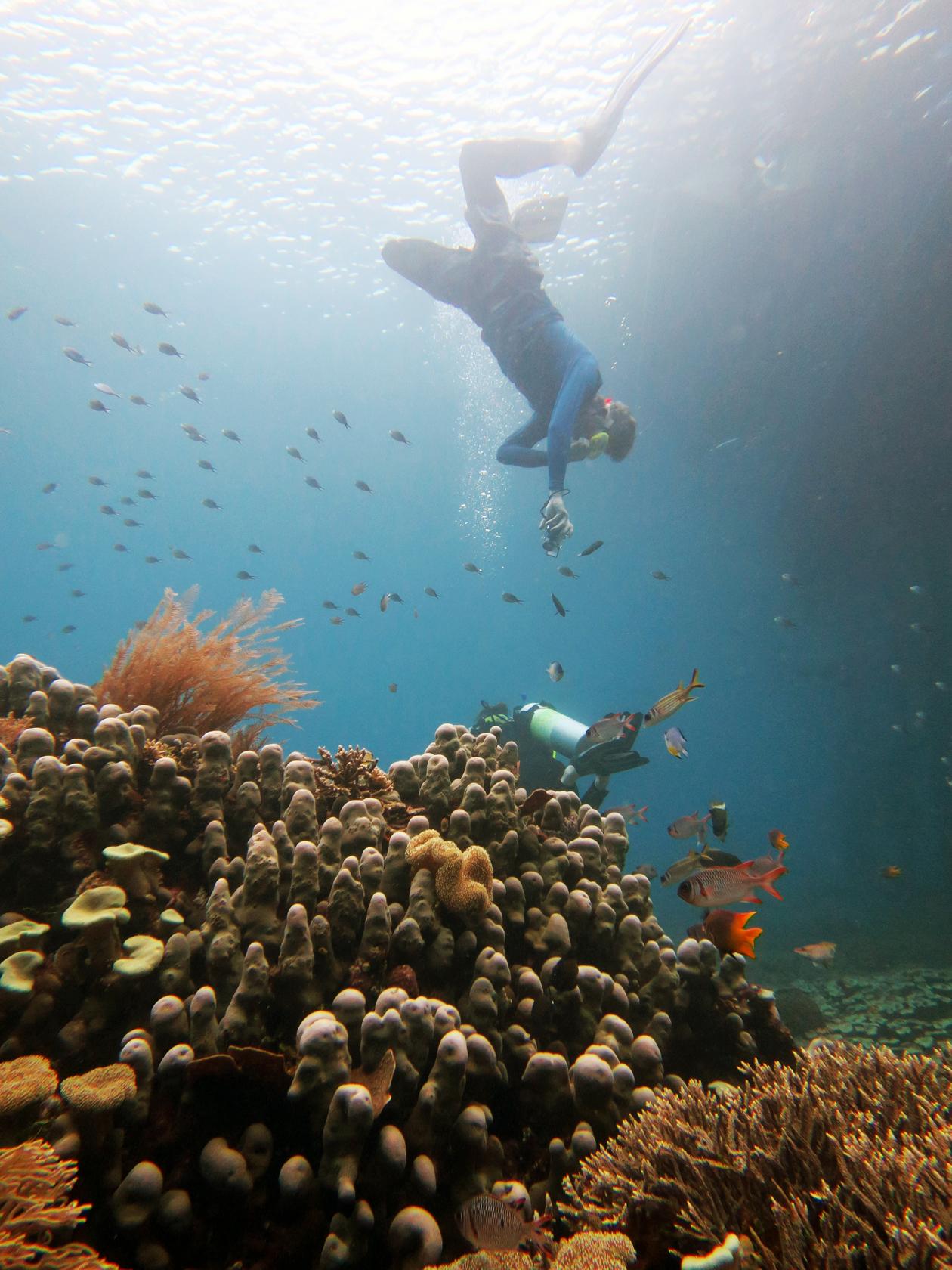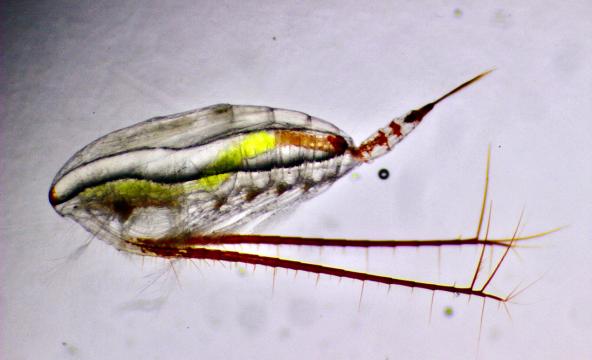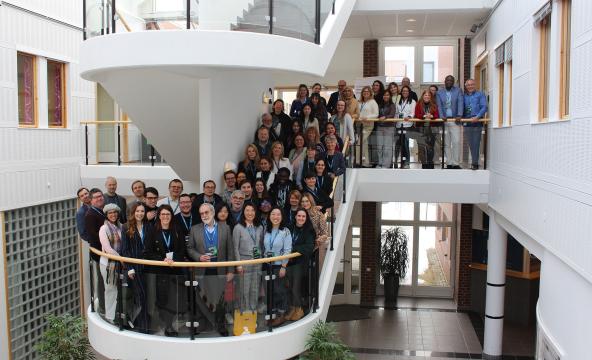
“Marine heatwaves occur increasingly often due to climate change, much like we see extreme weather phenomena more often on land. At the same time, one should remember that a "heatwave" in the north does not necessarily mean very high temperatures”, says ocean researcher Mark Costello.
Together with researchers from Portugal and Australia, among others, two professors from Nord University, Jorge Assis and Mark Costello are behind a new study examining how marine heatwaves affect the ocean beneath the surface.
The study was published in Nature Climate Change in August this year and has received much attention, including Australian media. By combining actual measurements and modelling, the researchers have examined global marine heatwaves from 1993 to 2019 all the way down to 2000 meters depth.
“Marine heatwaves and their effects have so far mostly been examined in surface waters, and we have had little knowledge of how the heatwaves behave down in the depths”, says Costello.
Can Last Up to Two Years
A marine heatwave is statistically defined as a relative change in water temperature. More precise, a period of five days where the temperature has been higher than 90 percent of the average for the last three decades.
“Our work shows that heatwaves last longer in deep water, particularly from 50 to 200 meters. At such depths, it is usually quite cold, and warming can thus increase activity and lead to more growth and productivity in marine life at such depths. But if the wildlife is adapted to cold, warming could lead to stress. This may lead to reduced growth and productivity”.
In some places, they found that the heatwaves were 19 percent more intense, that is 19 percent warmer than average, at such depths compared to the surface. The heatwaves also lasted longer the deeper down one went, and it could take up to two years before the water temperature returned to normal.
The researchers also examined how the areas most prone to heatwaves overlap with areas where animal and plant life is already exposed to temperatures at the borderline of what they can tolerate. They found such overlapping areas in 22 percent of the world's oceans. This applies especially to areas at great depths, from 1000 to 2000 meters.
Increases Productivity in Cold Waters
This summer, record high temperatures have been reported in the North Atlantic, and many are concerned about how this will affect life in the ocean.
“Since "heatwave" is a relative and not an absolute term, we can have heatwaves also in polar regions. This means that unlike heatwaves with extremely high temperatures that can be lethal in the air and in the ocean, such as in the Mediterranean, heatwaves in northern areas will not necessarily kill organisms”, says Costello.

He says it is complex to calculate what effect such heatwaves have on organisms in the water, especially since they have not yet studied the actual temperatures in the heatwaves.
“Without knowing the actual temperatures, we cannot say which scenario is most likely. The effect of such underwater heatwaves will vary locally, according to the temperature that was in the water before. If it is 1 degree in the water, and the temperature doubles to 2 degrees, it will still be quite cold”, says Costello.
In water that is already warm, heatwaves could lead to oxygen deficiency, which will stress and perhaps kill organisms.
“In water that is normally cold, which is typical for temperate and polar regions, heatwaves could, on the other hand, have a positive effect”, says Costello.
Affects Body Size
Previous research at Nord University has shown that increasing temperatures result in an increase in the number of species present at higher latitudes, and a decrease at lower latitudes.
“Globally, we see an increase in the number of species up to an average annual temperature of 20 degrees. If it gets warmer than this, we see a decline”, says Costello.
Changes in species richness can locally affect both fisheries and ecosystems.
“But on a larger geographical scale, marine species will adapt to climate change by moving their distribution”, says Costello.
Research at Nord University has shown that many marine animal species become smaller in size as the ocean gets warmer. But here too there are variations. Among some Arctic species, such as Greenland halibut (Reinhardtius hippoglossoides), a small increase in temperature can lead to an increase in body size.
“For Greenland halibut, a doubling in temperature, from 0-2 to 2-4 degrees will give a "boost" in the growth rate. In such very cold areas, it is the cold that sets the limit for growth”, says Costello.
“Looking ahead, we need observations on how species respond to temperature in deeper seas to know if this subsurface warming will have positive or negative affects on ocean productivity and biodiversity”.

References:
- Fragkopoulou E, Gupta AS, Costello MJ, Wernberg T, Araújo MB, Serrão EA, De Clerck O, Assis J. Marine biodiversity exposed to prolonged and intense subsurface heatwaves. Nature Climate Change.
- Gordó-Vilaseca C, Pecuchet L, Coll M, Reiss H, Jüterbock A, Costello MJ. 2023. Over 20% of marine fishes shifting in the North and Barents Seas, but not in the Norwegian Sea. PeerJ 11, e15801. https://doi.org/10.7717/peerj.15801
- Gordó-Vilaseca C. Stephenson F, Coll M, Lavin C, Costello MJ. 2023. Three decades of increasing fish biodiversity across the north-east Atlantic and Arctic Oceans. Proceedings of the National Academy of Sciences, online.
- Lavin CP, Gordó-Vilaseca C, Costello MJ, Shi Z, Stephenson F, Grüss A. 2022. Warm and cold temperatures limit the maximum body length of teleost fishes across a latitudinal gradient in Norwegian waters. Environ Biol Fish. https://doi.org/10.1007/s10641-022-01270-4







